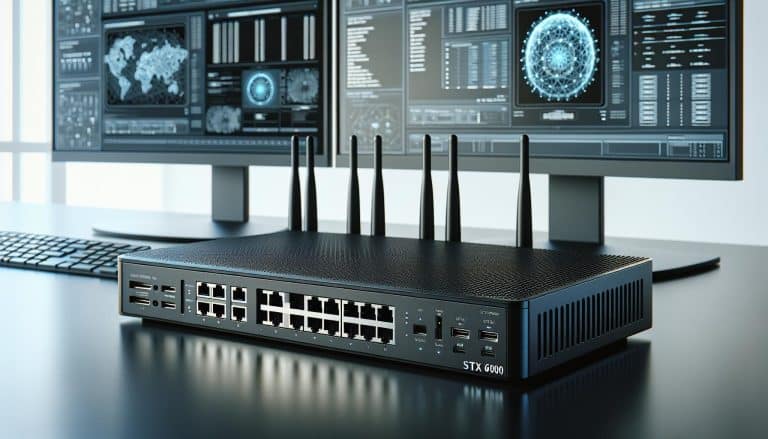Defi Governance Models
The decentralized finance (DeFi) industry is a rapidly growing sector of the global economy, and it has brought with it a new set of challenges in terms of governance. While there are numerous potential models that can be used to govern DeFi projects, each model has its own unique advantages and disadvantages. In this article, we will explore the different DeFi governance models, compare their pros and cons, discuss the role of onboarding and offboarding in DeFi governance, examine the importance of risk management and regulatory compliance in these models, and juxtapose how different approaches to DeFi governance have been used by various projects. By exploring all these topics in detail, readers will gain a better understanding of the complexities associated with governing decentralized financial systems.
Overview of DeFi Governance
DeFi governance offers a framework for managing the financial activities of decentralized ecosystems by utilizing a set of rules, with varying levels of participation from all stakeholders. This includes decentralized decision making that allows users to collectively make decisions about the protocol’s features and risk mitigation measures that help protect stakeholders’ funds. DeFi governance models take into account various factors such as scalability, reliability, trustlessness, and security which are essential in the operation of any financial system. With these models, users can have control over their own funds while also being able to benefit from the collective decision-making process. As such, it is important for developers to understand the different types of on-chain governance models so they can create protocols that are both secure and efficient. By understanding how these protocols work and what key elements they must include in order to be successful, developers can create robust solutions that will better serve their users and improve overall performance within DeFi markets. Transitioning into this topic, on-chain governance provides an additional layer of protection as well as additional control over funds.
On-Chain Governance
Blockchain-based protocols have seen increasing adoption, with over $4 billion locked in DeFi applications in 2020 alone. On-Chain Governance provides an automated mechanism for decision making and enforcement of protocol rules, introducing a high degree of transparency and trust. It is based on the consensus algorithm employed by the blockchain network, where all participants are allowed to make decisions on how to run the system. On-Chain Governance allows for quicker resolution of disputes and more efficient execution of actions than traditional organizational structures. However, it also comes with scaling concerns as more participants join the network or changes are made to existing protocols. The structure may become increasingly complex as time goes on, making it more difficult to reach consensus or enforce rules without significant effort from developers and users alike. In order to ensure successful governance models, organizations must consider both scalability and security when building their networks and protocols. With continued development in the space, On-Chain Governance has shown potential as a reliable way to manage decentralized systems moving forward. By transitioning into Off-Chain Governance we can explore additional methods for managing decentralized projects that may offer greater flexibility while maintaining trustless operations.
Off-Chain Governance
Off-chain governance refers to the process by which decentralized protocols are managed and governed outside of their native blockchain infrastructure. It is commonly used in the DeFi space, with three main models: community-led governance, foundation-led governance, and hybrid governance models. Community-led governance decentralizes power among stakeholders, while foundation-led governance provides centralized control under a dedicated organization. Hybrid models combine characteristics of both approaches to provide a balance between decentralization and centralization. Depending on the project’s needs, these different options can be utilized to ensure an efficient decision-making process within the protocol.
Community-Led Governance
Community-Led Governance is a decentralized approach to decision-making in which stakeholders have direct control over the policy and protocol development of a DeFi system. This type of governance utilizes user experience and token distribution as its primary factors when approving changes, allowing users to decide what features they want implemented or updated by voting on the proposals with their tokens. By using this model, the network becomes more transparent and efficient since it is not subject to any central authority. Additionally, it allows for community members to help shape the direction of the project, making sure that it remains aligned with their vision and values. As such, Community-Led Governance provides an effective way for DeFi projects to stay agile while still being able to implement change without compromising decentralization. The next step in understanding DeFi governance models is exploring Foundation-led Governance.
Foundation-Led Governance
Foundation-Led Governance is a decentralized decision-making structure that allows stakeholders to have indirect control over the protocol development of a system through the appointment of representatives. In this type of governance model, the foundation holds a significant amount of influence in setting and implementing decisions on behalf of stakeholders. Foundations are typically responsible for providing financial incentives to developers, overseeing budgeting decisions, and creating an environment of collaboration between stakeholders. These roles are essential for ensuring that changes made to protocols are beneficial for all participants. Additionally, foundations can also allocate resources towards marketing strategies and other initiatives that help promote adoption and usage by users within their community. By providing such incentives, foundations can ensure that their protocols remain competitive in the ever-evolving DeFi landscape. Ultimately, Foundation-Led Governance models provide an effective way for stakeholders to have representation while still allowing them some degree of autonomy as well. As such, these models offer an attractive balance between decentralization and control which makes them suitable for many types of DeFi projects. With this in mind, it is important to consider how hybrid governance models might further strengthen these roles while maintaining decentralization throughout the network.
Hybrid Governance Models
Foundation-led governance is a popular model in the world of decentralized finance (DeFi) as it allows for an organization to play a large role in governing the protocols and projects associated with their products. However, this type of governance is not without its critics who argue that it can create too much centralization. As such, hybrid models have become increasingly popular among DeFi protocols as they attempt to find a way to balance decentralization and control.
Hybrid models are those which combine elements of both foundation-led and on-chain governance systems. These models typically include decentralised voting amongst holders, automated audits, and other measures designed to increase transparency and accountability while allowing protocol creators some degree of control over their project’s development. This type of governance system is growing in popularity as it offers more flexibility than either foundation-led or on-chain governance alone while still allowing founders some level of oversight over their project’s direction. With all these benefits considered, it’s important to also consider the potential drawbacks when deciding whether or not hybrid models are right for your protocol or project. To explore this further, let us now turn our attention to the pros and cons of on-chain governance.
Pros and Cons of On-Chain Governance
On-Chain Governance models have the potential to revolutionize DeFi governance, allowing for an unprecedented level of transparency and decentralization. However, it is important to consider the trade offs that come with this increased decentralization and code immutability. On-chain governance often results in slower decision making due to consensus requirements, a lack of flexibility due to immutable code, and higher transaction costs as more users are added. These challenges can be addressed through careful consideration of how decisions are made on the platform. Despite these potential issues, on-chain governance offers many advantages over traditional systems such as greater security against malicious actors or centralized authorities altering the codebase without permission. Furthermore, community members can review any changes made before they go into effect, eliminating the risk of “backdoor” changes by developers or other stakeholders with access to the system. As such, on-chain governance has great potential for providing improved levels of decentralization and security compared to traditional methods. Nevertheless, it is important to consider all pros and cons carefully when evaluating different defi models in order to ensure that they meet user expectations while still achieving their desired outcomes. With this in mind, a thorough assessment of both on-chain and off-chain governance models should be undertaken before committing to any particular model.
Pros and Cons of Off-Chain Governance
Off-chain governance models provide decentralized networks with autonomy, trust, flexibility and the ability to make decisions quickly. Autonomy is maintained by allowing stakeholders to have a say in how the network operates without relying on a centralized third-party. Trust is enabled as participants are able to validate decisions independently from one another. Flexibility is enabled by providing stakeholders with the ability to adjust parameters over time without having to hard code them into the protocol. Furthermore, off-chain governance models facilitate faster decision making as they do not require consensus protocols such as proof of work or proof of stake which can take a long time for a decision to be reached.
Autonomy
Autonomy within defi governance models has become an increasingly important consideration in recent times. Decentralized Autonomy is a concept which implies that the governance of a model should be independent from any single entity or group. This allows for greater trust and stability, as decisions are made by consensus with no central point of failure. Governance Trust is an additional factor to consider when evaluating the effectiveness of a defi governance model. It refers to the level of confidence that users have in the system, based on its ability to deliver expected outcomes consistently over time. By incorporating mechanisms which promote decentralized autonomy and build trust in the system, defi projects can create more secure and reliable protocols which reduce risk for all participants. This transition into trust is essential for creating sustainable solutions in the long-term.
Trust
Trust is a foundational element of decentralized finance, and it can be achieved through the implementation of mechanisms which ensure all participants are able to make informed decisions that benefit the collective. Trustworthiness in defi governance models is essential for creating secure protocols that protect user data and funds. Security protocols such as multi-signature wallets, tokens with whitelists, and KYC/AML checks help build trust by providing a level of security for users’ assets. This helps to encourage new users to enter into the ecosystem while protecting existing users from malicious actors. The implementation of these measures alongside transparent communication between stakeholders also contributes to the overall trustworthiness of defi governance models. With this strong foundation in place, defi projects can move forward with greater flexibility in their operations.
Flexibility
Flexibility is an important component of decentralized finance as it allows for the dynamic adjustment of protocols in order to accommodate changing market conditions. This means that innovative solutions can be quickly implemented and adapted by users, allowing them to respond swiftly to the ever-evolving needs of the DeFi ecosystem. Flexible dynamics enable organizations to rapidly adjust their strategies when faced with unforeseen circumstances, reducing risk and increasing efficiency. By utilizing this type of governance model, projects are better suited to react quickly and make decisions at pace while still ensuring that all stakeholders have a say in the process. As such, flexibility provides an invaluable tool for DeFi projects looking to remain agile and competitive in today’s fast-paced environment. Transitioning into speed of decision making, quick decisions are necessary for any successful project as they allow protocols or projects to stay ahead of competitors and capitalize on opportunities before they disappear.
Speed of Decision Making
Speed is essential for success in the modern decentralized financial landscape, with fast decision-making allowing projects to stay ahead of rivals and seize fleeting opportunities. Defi governance models must be capable of quickly responding to changes in the market, while still providing scalability and security. In order to achieve this balance, defi protocols must implement a system that allows for rapid decisions without sacrificing safety:
- Rules should be clear and easy to understand by all stakeholders.
- Decisions should be made in a timely manner with minimal delay.
- Governance mechanisms should have built-in safeguards against malicious actors.
The ability to make decisions quickly is an integral component of any successful defi governance model as it enables projects to react swiftly and efficiently to changing circumstances or market conditions. To achieve this, protocols must ensure that their rules are easy to follow and that decision-making processes are streamlined for maximum efficiency. With careful consideration of these factors, defi projects will have the best chance of achieving their goals.
Examples of DeFi Governance Models
Powerful DeFi governance models can provide unparalleled opportunities for individuals to have a direct and meaningful impact on the growth of decentralized financial systems. By utilizing governance incentives, voting mechanics, and other tools, these models allow users to shape the development of projects in real-time. This is especially important when it comes to DeFi protocols where changes are often needed quickly in order to stay ahead of competition or address user feedback. For example, some token holders might be able to propose changes like protocol upgrades or fee adjustments directly through a voting system. Incentives may also be used to encourage participation in the form of rewards for staking tokens or helping with bug fixes. Allowing users to actively engage in decision making encourages trust amongst stakeholders as decisions will reflect their collective interests rather than a single entity’s agenda. This allows for better transparency and accountability which can help drive long-term success for the project. As such, understanding how different defi governance models work is essential for any user wanting to make an informed decision about investing or participating in a DeFi platform. With this knowledge, users can better understand the risks and potential rewards associated with their chosen protocol as well as its future trajectory. The role of staking in Defi governance will be discussed in subsequent sections.
The Role of Staking in DeFi Governance
Staking can serve as a crucial mechanism for realizing the potential of DeFi governance, allowing stakeholders to align their interests and contribute to decision-making processes with tangible rewards. Staking offers users an incentive to become involved in a given platform by providing them with liquidity incentives, which can help support the network’s stability. Moreover, stakers are rewarded depending on the amount of tokens they stake and how long they hold them; this incentivizes stakers to act responsibly and maintain the stability of the network by participating in governance decisions. In addition, staking allows projects to decentralize control over resources while distributing voting rights among token holders so that all stakeholders have an equal say in decision-making processes. By doing so, it helps ensure that no single entity has too much influence over network operations or its protocol parameters. The role of staking is thus essential for creating a fair and balanced decentralized governance system within DeFi protocols. As such, tokenomics plays an important role in ensuring that these systems remain secure and resilient over time.
The Role of Tokenomics in DeFi Governance
Tokenomics plays a crucial role in the design and implementation of decentralized governance systems, providing an economic structure to incentivize stakeholders to participate in decision-making processes. Tokenomics is designed with economic incentives such as token scarcity, rewards, and fees that encourage users to engage in the system. This allows for an effective reward system which encourages active participation and ensures that decisions are made by those who have the most skin in the game. Additionally, tokenomics helps to ensure that only those participants who are most committed to the project’s success will be able to benefit from it financially. Thus, tokenomics provides an important tool for ensuring effective governance within DeFi projects. Transitioning into voting, another key element of DeFi governance models, it is essential for participants of these systems to understand how their votes can shape outcomes within decentralized networks.
The Role of Voting in DeFi Governance
Voting is a crucial component of decentralized networks, allowing stakeholders to exercise their influence and shape the outcomes within these systems. With voting, participants can leverage their collective power to drive meaningful change and ensure that their voices are heard. Metaphorically speaking, voting acts as a lever for users to move mountains in DeFi projects.
The most common form of voting in DeFi governance models is through staking rewards. Stakers are rewarded with tokens for locking up their funds in the protocol, which gives them an increased level of control over decision-making processes. Additionally, some protocols offer liquidity incentives such as yield farming rewards or affiliate bonuses that incentivize users to provide liquidity to certain markets. Both staking rewards and liquidity incentives give users financial incentive to participate actively in the governance process by casting votes on proposals, thus ensuring that decisions are made based on consensus rather than centralized authority. Through this type of voting system, DeFi projects can create more equitable and transparent forms of governance compared to traditional models. From here, we can transition into discussing the role of liquidity in DeFi governance models.
The Role of Liquidity in DeFi Governance
Liquidity plays a key role in the success of decentralized finance projects, providing an essential infrastructure for value creation and allocation. Through the implementation of liquidity incentives, smart contracts can be used to incentivize stakeholders to provide liquidity and create an environment that is conducive to efficient market functioning. Liquidity incentives serve as powerful tools for DeFi governance models by allowing users to earn rewards from the pooling of assets, thus encouraging them to participate in essential activities such as staking or lending. Furthermore, these incentives allow users to benefit from increased capital efficiency and more secure asset transfer systems while also enabling the development of novel financial instruments such as synthetic assets and derivatives. Ultimately, the optimal utilization of liquidity incentives will be critical for ensuring sustainable growth in DeFi protocols over time. As a result of this importance, it is vital to analyze how different models are incorporating these features into their designs in order to achieve effective governance outcomes. Transitioning from this discussion on liquidity incentives, we now turn our attention towards exploring the role of automation in DeFi governance models.
The Role of Automation in DeFi Governance
Automation has become a defining feature of decentralized finance, with many protocols leveraging smart contracts to autonomously manage their respective systems. The benefits of automation for DeFi governance are numerous, ranging from increased efficiency and improved accuracy to lower costs and reduced need for human intervention. Automation also allows for the decentralization of decision-making processes, enabling more robust and secure protocols due to its distributed nature. Additionally, automation can help reduce complexity in DeFi governance, as well as provide greater transparency into transactions and data.
However, there are certain challenges associated with automating DeFi governance models. Security risks can be introduced through faulty code or malicious actors exploiting vulnerabilities in the system. Moreover, automated systems may lack flexibility when responding to new situations or scenarios that have not been anticipated in advance by the team developing them. Onboarding users onto these platforms can also be difficult without manual oversight and support from user onboarding specialists. Finally, automating certain aspects of DeFi governance may result in the loss of control over decision-making processes by those responsible for maintaining them. To conclude this section on the role of automation in defi governance models, it is clear that while automated solutions can bring significant advantages to users and developers alike, there are still some important considerations to keep in mind when implementing them.
The Role of Onboarding in DeFi Governance
The process of onboarding users onto decentralized finance protocols is an essential component of their effective governance. In order to maintain a secure and reliable network, developers must be sure that new users can access the platform and interact with it without putting the security of the protocol at risk. As such, thorough security analysis must be done on any proposed onboarding procedure before it can be implemented. Additionally, measures should also be taken to ensure that only legitimate users are allowed access to the network and that malicious actors are quickly identified and dealt with appropriately. This requires both proactive measures, such as implementing rigorous authentication processes for new user accounts, as well as reactive measures in case of suspicious activity or breaches in security. By ensuring that only safe operations take place on the DeFi protocol’s network, its overall security is greatly improved. Consequently, this improves its governance model by making it more resilient against attacks or manipulation from external actors.
In conclusion, proper onboarding procedures play a vital role in maintaining secure networks and achieving good governance models for DeFi protocols. As such, developers need to closely monitor these processes to ensure they meet both regulatory requirements and adequate levels of security for their users’ data privacy while still allowing them easy access to the system’s features. With a sound onboarding strategy in place, DeFi protocols can then move onto considering other elements involved in their governance model such as offboarding procedures which will help provide further protection against malicious activity or data theft.
The Role of Offboarding in DeFi Governance
Offboarding is an equally critical component of decentralized finance protocols, as it allows for the safe and secure removal of users from the network. According to a recent survey, over 80% of DeFi users believe that having an offboarding process in place is essential for providing security to their investments. Offboarding processes are implemented with the use of governance incentives that encourage decision making that corresponds with beneficial outcomes both economically and socially. These incentives are directed towards preventing malicious actors from exploiting system vulnerabilities and forming monopolies, which can have a significant negative impact on the DeFi network. The role of risk management is essential in ensuring these safeguards remain effective when it comes to offboarding users from the DeFi network.
The Role of Risk Management in DeFi Governance
Risk management plays a critical role in the secure operation of decentralized finance networks, as it helps to mitigate potential risks and ensure the safety of users’ investments. Risk diversification strategies are used to reduce exposure to individual risks, while risk mitigation techniques are employed to minimize losses from unanticipated events.
The process of risk management involves weighing up expected gains against potential losses associated with different activities. This requires a thorough understanding of defi governance models, their strengths and weaknesses, so that appropriate measures can be taken to protect users’ funds. These may include diversifying investments across multiple platforms or using automated systems for monitoring suspicious activity. Additionally, regulatory compliance is essential in order for users to trust the system and not fear potential losses due to illegal activities within the network.
The Role of Regulatory Compliance in DeFi Governance
The role of risk management in DeFi governance is integral to the overall success of the ecosystem, as it helps mitigate potential risks and protect users’ funds. A well-defined risk management protocol can help ensure that users are not exposed to any unnecessary risk while still allowing them to take advantage of the opportunities offered by DeFi platforms. However, another important aspect of DeFi governance is regulatory compliance. Regulatory compliance refers to the process of meeting various legal requirements imposed by governing bodies or regulators. This means that all activities and operations conducted within a DeFi platform must comply with applicable laws and regulations in order for it to remain operational.
Regulatory compliance is especially important when dealing with financial services such as those provided by many decentralized finance (DeFi) protocols. Compliance frameworks such as KYC/AML, Anti-Money Laundering (AML), and Know Your Customer (KYC) are necessary measures designed to prevent illegal activities such as money laundering or fraud from occurring on these platforms. Additionally, other legal implications may also exist depending on the jurisdiction where the user resides or where the platform itself operates from. Compliance with local laws is essential for any organization operating within a particular jurisdiction and this applies equally to DeFi projects which must adhere strictly to all applicable regulations in order for their business model to be successful.






 Bitcoin
Bitcoin  Ethereum
Ethereum  Tether
Tether  XRP
XRP  USDC
USDC  Wrapped SOL
Wrapped SOL  TRON
TRON  Lido Staked Ether
Lido Staked Ether  Dogecoin
Dogecoin  Figure Heloc
Figure Heloc  Cardano
Cardano  WhiteBIT Coin
WhiteBIT Coin  Bitcoin Cash
Bitcoin Cash  Wrapped stETH
Wrapped stETH  Wrapped Bitcoin
Wrapped Bitcoin  USDS
USDS  Wrapped eETH
Wrapped eETH  Binance Bridged USDT (BNB Smart Chain)
Binance Bridged USDT (BNB Smart Chain)  Chainlink
Chainlink  Monero
Monero  LEO Token
LEO Token  WETH
WETH  Zcash
Zcash  Stellar
Stellar  Coinbase Wrapped BTC
Coinbase Wrapped BTC  Ethena USDe
Ethena USDe  Hyperliquid
Hyperliquid  Litecoin
Litecoin  Sui
Sui  Avalanche
Avalanche  Hedera
Hedera  sUSDS
sUSDS  Shiba Inu
Shiba Inu  Dai
Dai  USDT0
USDT0  Canton
Canton  Toncoin
Toncoin  PayPal USD
PayPal USD  World Liberty Financial
World Liberty Financial  Uniswap
Uniswap  Cronos
Cronos  Ethena Staked USDe
Ethena Staked USDe  Mantle
Mantle  USD1
USD1  Polkadot
Polkadot  Rain
Rain  Bitget Token
Bitget Token  MemeCore
MemeCore